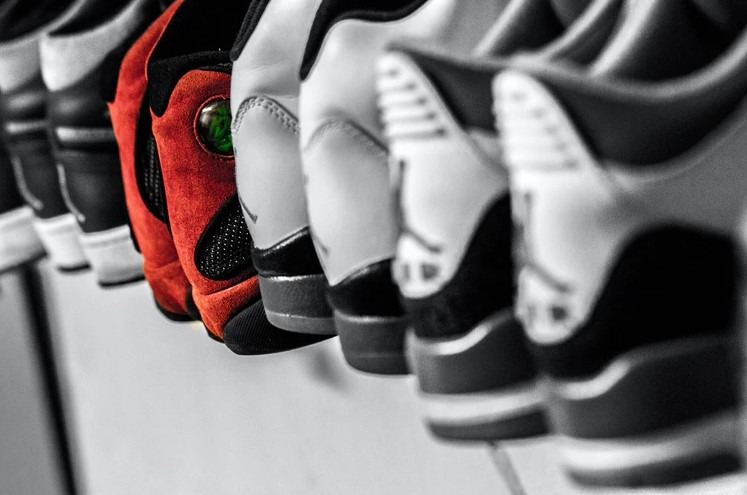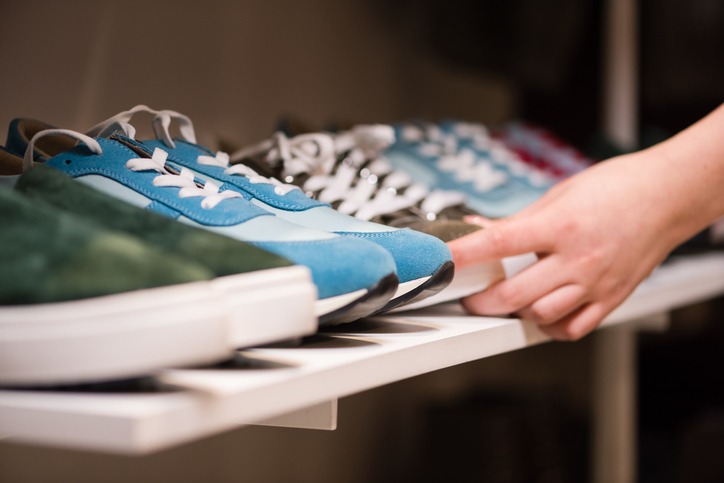Sneakers are virtually everywhere. You were them for playing sports, running, work, or even on casual days. It is no wonder, as it cut across being an insignia of athleticism to a cultural and fashion commodity to present-day high-tech footwear. Yet, you might be surprised that the history of the sneakers traces longer than you deem. Thanks to the first sneakers invented in the 1830s, the shoes have transformed massively throughout the years and become a staple in our lives today. In this article, let’s discover who is behind this innovation and more about the sneakers’ fascination history.
The Inventor of the First Sneakers
View this post on Instagram
Wait Webster is credited as the originator of the sneakers. In 1832, he patented a technique wherein thin India rubber is attached to the soles of shoes and boots while an equally slim sheet of material is placed on top. This led to the creation of the Plimsolls, the first sneakers, which were widely used for active activities and by vacationers yearning for comfy footwear.
The Evolution of the Sneakers
View this post on Instagram
The catch is that the first shoes, while more flexible and bouncier than leather, were pretty flimsy and deteriorated quickly. Luckily, Charles Goodyear discovered the process of vulcanizing rubber. It made rubber weatherproof, more durable, and flexible, which opened the doors for rubber to be used in many commercial products. Soon, the material was then applied to the Plimsolls. By the 1870s, these flat-soled, canvas-and-rubbed shoes had become more prevalent.
While there are many debates on where the term “sneakers” started, one of the most popular references states that the word came from the word sneak, as it allowed wearers to act slyly or walk stealthily. Rubber shoes were relatively quieter on the ground as compared to the leather-soled shoes people had before the rubber-soled shoe’s existence.
In the 1900s, the demand for these shoes surged, and they became increasingly popular for outdoor, leisure, and sports activities. In 1923, Converse released the “All-Star” shoe, Chuck Taylor’s signature shoes, the basketball player comparable to Michael Jordan during his day. Today, the Chuck Taylor All-Stars remains one of the best-selling sneakers of all time.
In 1924, Harold Abrahams wore the running sneakers, designed by Reebok’s founder J.W. Foster, and won a gold medal in the 1924 Paris Olympics. Meanwhile, other brands also sprouted, such as Keds, Arrow, and PF Flyers.
Since then, sneakers have been on the steady path of evolution, and the U.S. sneaker market also grew constantly post-World War I. Shoes were created and marketed for different sports, appealing to both men and women.
Yet, it was the 1936 Berlin Olympic Games that catapulted sneakers to worldwide popularity. The U.S. basketball team sported their Converse shoes throughout the games. Meanwhile, U.S. runner Jesse Owen earned four gold medals using track shoes created by Adolf Dassler, the founder of the powerhouse sports brand Adidas.
Sales boomed, and more brands came up in the 1940s. Some of them are still operating today, such as Fila, Mizuno, Gola, Wilson, New Balance, and Puma. However, rubber became a necessity in World War II and many shoemaking companies resorted to making military supplies during the global conflict.
Post-World War II, sneakers found a new purpose as they evolved to be objects of fashion, eclipsing the world of sports and resulting in the introduction of more sneaker brands. With schools easing up dress codes in the 1950s, these shoes started to be worn in classrooms. Plus, its usage for leisure activities has also greatly expanded and became a regular part of people’s daily wear. Sales skyrocketed and took a toll on the market share of leather and classic shoes, which then led to intense advertising wars between companies.
In the 1960s, two more iconic sneaker brands were born: Nike in 1964 and Vans in 1966. The former introduced the waffle-soled running shoes, while the ripple-soled running shoes were released by the latter.
The 1970s saw jogging rising as a form of daily exercise, leading to the creation of running shoes designed for the activity. Shoe companies and brands also catered to both markets, casual fashion and athletic. Soon, sneakers for daily wear and intended for specific sports, such as basketball, football, and running, had their specialized shoes boasting advanced technologies.
Sneakers became more monumental in the 80s and the 90s as companies have harnessed their shoe creation and marketing prowess. Shoe brands also transcended footwear, venturing into the world of clothing and other gears. The competition grew more significantly, no longer against other types of shoes but rather between sneaker brands themselves.
More colors, patterns, and designs came while big celebrities and sports figures endorsed them. In these eras, sneakers proved to be more than just sporting shoes but adored fashion statements, allowing people to express their identity and personality.
The Commercialisation of Sneakers
View this post on Instagram
A sociologist, Yuniya Kawamura, defines three waves of the phenomenon. They are listed below.
1. In 1970s, an underground sneaker culture and the emergence of hip-hop officially defined the first wave of sneakers. As a key example, the ‘Samba’ design of Adidas became a key part of Terrace Fashion within the football fan subculture. Similarly, in 1986, Run-DMC released a song called, ‘My Adidas’, which landed him a sponsorship deal with the brand. This forged the deep-rooted place of sneakers in popular culture.
2. With the launch of Nike Air Jordans in 1984, the second wave of this phenomenon hit the ceiling. This further promoted the commodification of sneakers. Their desirability as necessary status items was fuelled through different celebrity endorsements.
3. For the sneaker brand ‘Kawamura’, the third wave is marked by the advances in digital age and the significant resulting growth in sneaker marketing and resell culture.
Come to the turn of new millennia and beyond, the development of sneakers was relentless. Propelled by the quick advancement of technology, more styles and designs of performance sneakers came into the market. Along with sports gear, their sales continued to surge in malls and, later on, in the online world.
In 2019, the global sneaker resale market was valued at £4.6 billion. Furthermore, it has been forecasted to reach the net amount of £21 billion by 2030. By 2025, it’s projected that total global sales would reach over $95 billion. The ever-increasing number of sneaker heads, who collect and trade different tyeps of sneakers, have made sure to maintain the cult status. Famous brands, such as Adidas and Nike release ‘limited editions’ of their sneakers from time to time, that are further associated with a famous celebrity, hip-hop star or an athlete.
What will happen in the future? All we can expect are more improved and cutting-edge sneakers as they are certainly here to stay.
Sneakers – An Ever Green Cool
From sport to fashion, sneakers are continuously dominating the consumer market. Despite being endorsed by masses on large scale and its adoption becoming mainstream, sneakers have retained their unique value and coolness as cultural and fashion icons. They are lightweight, breathable, waterproof and have a heal-toe drop between 6mm and 12mm. Initially, sneakers were invented and designed specifically for different kinds of sports and physical exercises. However, with the advances in their top-notch structure and cushioning, sneakers are gradually transcending into other arenas including skateboarding, music, and everyday wear.


